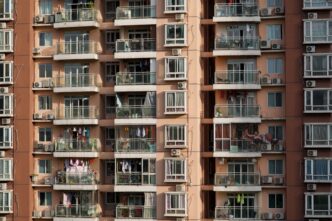Inflation has taken center stage in economic discussions, particularly as central banks grapple with the delicate balance of taming price increases while sustaining growth. However, lurking beneath the surface of headline inflation figures is the housing market, which is poised as both a symptom and a driver of broader economic trends.
Consider the case of Germany, where the interplay of rising inflation and a constrained housing supply has led to a paradox. On one hand, the European Central Bank (ECB) has faced mounting pressure to increase interest rates to combat inflation, which hit 8.6% in July 2023. On the other, the housing market suffers from a significant supply shortage, exacerbating affordability issues. As interest rates rise, potential homebuyers retreat, further dampening new constructions and creating a cycle that keeps the housing market under strain.
The narrative is similar in the United States, where the Federal Reserve has raised interest rates multiple times, yet the housing market remains robust. This resilience is misleading, however, as it is fueled by a combination of low inventory and an influx of institutional investors purchasing single-family homes. Companies like BlackRock and Invitation Homes have become key players, acquiring properties and renting them out, which has driven up prices beyond the reach of first-time buyers. The unintended consequence of such financialization is a stark increase in rental costs, contributing to overall inflation.
What happens when central banks tighten monetary policy? In theory, higher interest rates should cool down hot property markets. However, the reality is more complex. Many existing homeowners are locked into low-interest mortgages, disincentivizing them from selling and contributing to the existing housing stock. This phenomenon is often referred to as “mortgage prison,” where homeowners feel trapped by the prospect of higher borrowing costs for new properties. The resulting stagnation in housing inventory keeps prices elevated, perpetuating inflationary pressures.
Interestingly, the “work-from-home” trend, born from the COVID-19 pandemic, has further complicated the landscape. Suburban and rural areas have seen an influx of buyers seeking more space, pushing prices in these regions up dramatically. Cities like Austin, Texas, have experienced an unprecedented surge in housing demand, driving prices to new heights and leaving local residents grappling with affordability issues. This shift illustrates how macroeconomic policies do not operate in a vacuum; they are intricately tied to lifestyle changes and demographic shifts.
Local governments are beginning to respond with policy changes aimed at increasing housing supply. In California, for instance, bills aimed at streamlining the approval process for new housing developments are gaining traction. The hope is that by easing regulations, more units will come onto the market, eventually alleviating some of the pressure on prices.
Yet, even if new policies succeed in generating more housing, the question remains: will it be enough to counter the inflationary forces at play? As central banks continue their tightening cycles, the housing market’s response will be critical. It is a delicate dance—one that requires constant monitoring of both monetary policy and housing supply dynamics.
In this tangled web of inflation, interest rates, and housing, it becomes clear that the solutions are not straightforward. The economic landscape is evolving, and those with the keenest understanding of these interconnections will have the best chance of navigating the complexities ahead.











